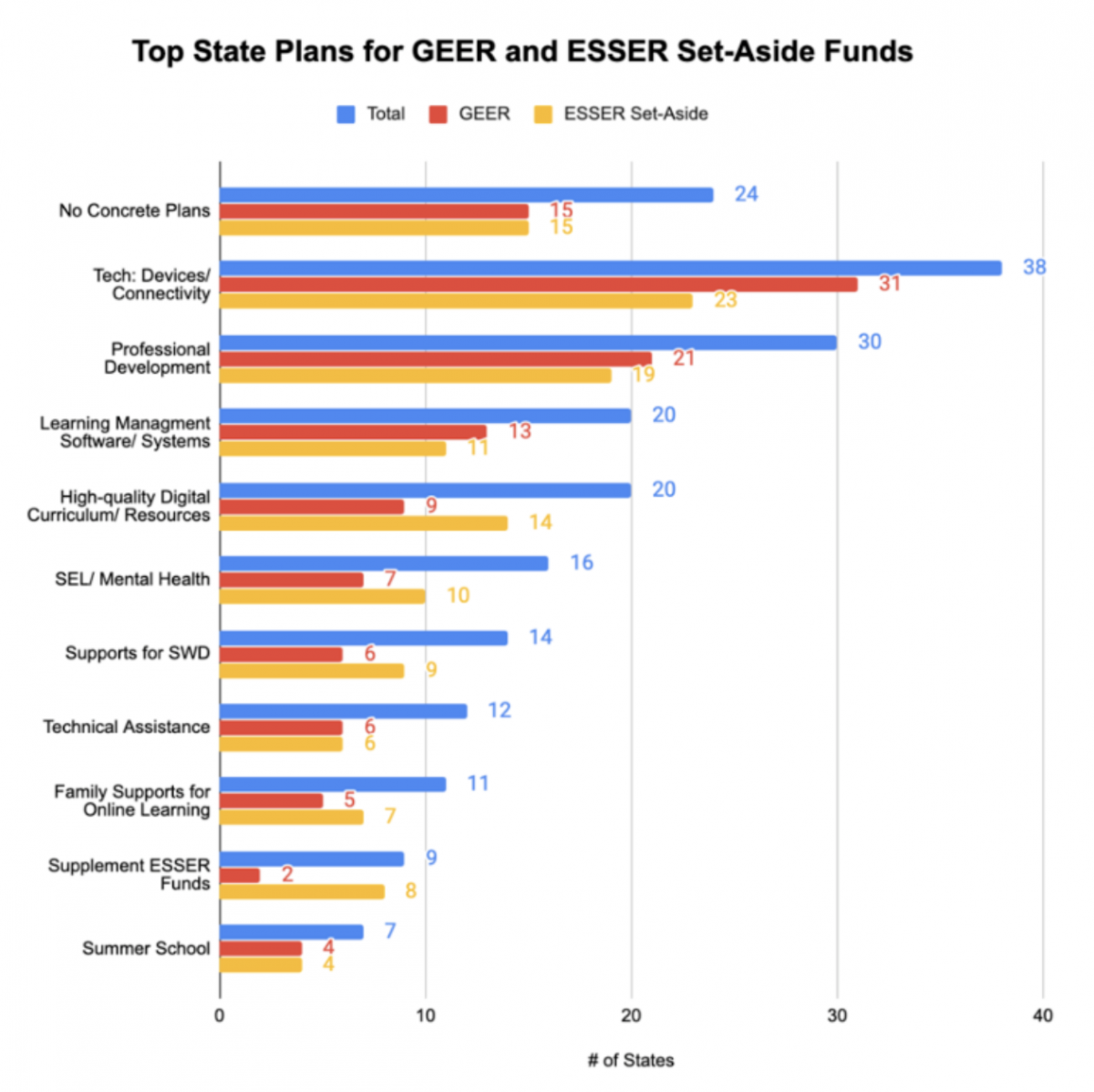

Here we are at the end of a school year unlike any other. And as you probably already know, Congress has allocated an unprecedented amount of federal education funding to help school districts overcome the unique challenges associated with the pandemic.
When the CARES Act was passed in April 2020, it included $13.2 billion for an Elementary and Secondary School Emergency Relief (ESSER) fund and $3 billion for a Governor's Emergency Education Relief (GEER) fund. Since then, Congress has passed additional legislationthat makes billions more dollars available to school districts within the ESSER fund and other allocations.

How should schools spend this windfall?
In 7 Habits of Highly Effective People, renowned author Stephen R. Covey recommends beginning with the end in mind. So, how does that translate to optimizing ESSER funds?
Understandably, federal and state officials initially focused on using the funds to purchase devices and facilitate internet access. But while narrowing the digital divide is critically important to effectively delivering remote learning, student outcomes are not improved by new devices and better connectivity alone. I like to use the analogy of having a new car in your driveway without wheels—it may look great, but it's not going to get you where you want to go.
As an educator, it's important to focus on the end result of improved student outcomes. You can narrow that focus by asking the following questions in order:
If your state or district still has funds left to spend, consider deploying Voyager Passport® to help you achieve your end result.
So, why Voyager Passport?
Ultimately, the combination of federal funding and local flexibility provided to districts offers a unique chance to reimagine instruction. As the Education Strategy Group put it, "State and local leaders have a real chance to turn this crisis into an opportunity to drive new approaches to education." Looking back to 2009, the $5 billion in federal stimulus funds made available through Race to the Top and i3 grants after the recession presented "opportunities for state and local leaders to raise expectations for students, dramatically improve academic growth, increase postsecondary enrollment and success, and, perhaps most importantly, close equity gaps in K–12 and higher education." To phrase it more succinctly, now is the time for schools to innovate.
How are states spending their funds?
On March 12, 2020, Ohio became the first state in the nation to close its schools. By March 25, all U.S. public schools had closed, which gave administrators little to no time to plan for finishing the school year. By mid-June 2020, states had identified the following priorities for the incoming federal funds:

As you can see, the top identified priority was addressing the digital divide and equipping students for remote learning, and many states allocated a large portion of funds accordingly. Per The Hunt Institute's GEER fund utilization tracking:
Professional development emerged as the second highest priority, which is unsurprising given the fact that many teachers were facing a steep learning curve in adapting their instructional methods and curricula to better suit remote learning. According to The Hunt Institute:
Learning management systems and digital curriculum resources were the third highest priorities. Once again, the allocation data from The Hunt Institute matched up well:
How much have states spent so far?
According to the Committee for a Responsible Federal Budget, $149.5 billion of the original $150 billion in CARES Act funds had been disbursed to state governments as of August 4, 2020.
The federal DOE’s CARES Act ESSER fund portal shows grants by state though February 2021 that indicate those funds allocated to states have largely been awarded or spent. However, a Congressional Budget Office (CBO) estimate on ESSER I and II spending from that same time period states, “Because most of those funds remain to be spent, CBO anticipates that the bulk of spending of funds provided in the reconciliation recommendations would occur after 2021.”
So, if you're an educator still figuring out what to do with your funding, remember: Begin with the end in mind. Innovate. And, ultimately, aim to lead your students toward improved outcomes. You've got this!